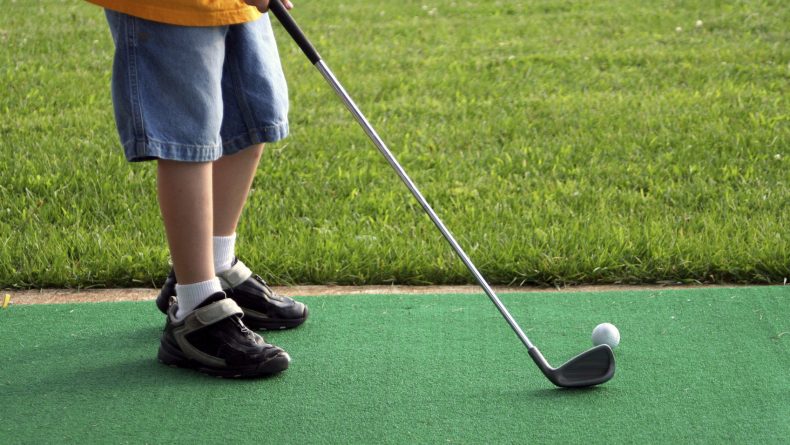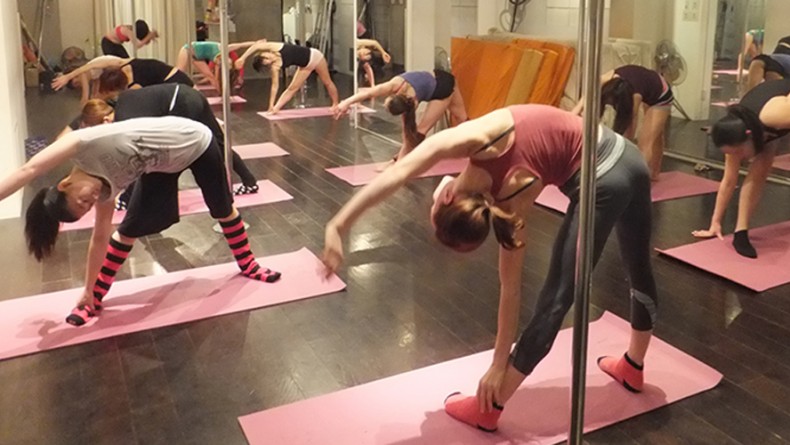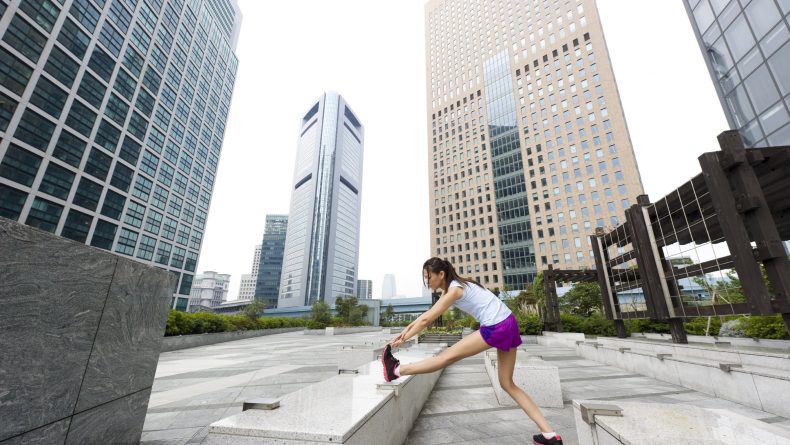Tokyo Fight Club: Krav Maga
A Guide To Self-Defense Fitness In The City
In Part II of "Tokyo Fight Club," my journey took me to a sport unknown. A step away from familiar martial arts, my next venture was Krav Maga. I knew I was in for a serious challenge — and potentially a painful one. Here's what you need to know, ladies.
A sweaty Krav Maga class was in session at MagaGym in Roppongi when I arrived and, naturally, I watched like a puppy in the window. I sat and pondered at the way they were all throwing straight kicks to the groin, flinching — just an inch — each time and wincing with pain when they threw their fists at the pads, much like Thor throws his hammer. My nerves took hold.
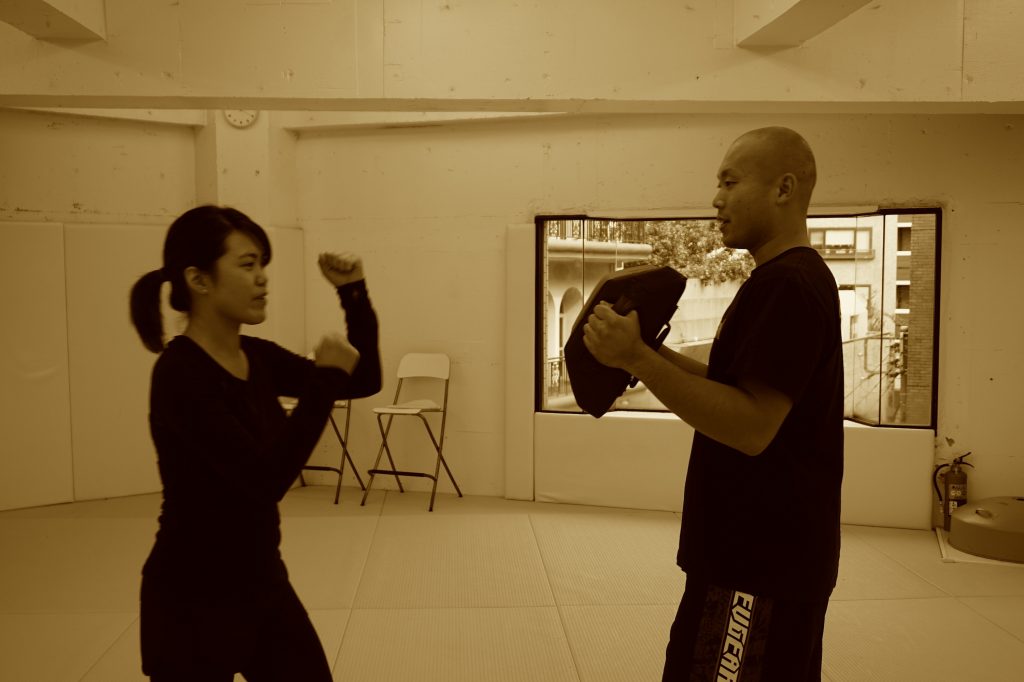
For those of you who have never heard of Krav Maga, it is a form of self-defense used by the IDF (Israeli Defense Forces), and it truly is one of the most effective methods of self-defense.
You’ll learn how to protect yourself when you’re faced with an attacker, using multiple techniques — including eye gouging — to fight back.
Although not strictly a martial art, it employs similar movements and techniques that you might use in Muay Thai. But, it is the practical aspect of the sport that differentiates it from the strict guidelines that many martial arts follow.
With trepidation I entered the room to be faced with our goliath of an instructor. The lesson was in Japanese, but if you are able to follow simple physical movements then this shouldn’t be a problem. As long as you make it known to the instructor that you are lacking in the language department, he will be sure to look straight at you when demonstrating anything.
If the idea of self-defense does not entice you in, consider the benefits that a high intensity work out could bring. “Training is very intensive and it’s one of the best methods to get in shape,” Atsuhiro “Kuma” Kumagai, the head of the Krav Maga gyms, told me before the lesson.
And he was right. After gathering to stand in a line in front of the instructor and bowing to greet him, we began with an upbeat aerobic warm up. How my heart raced (inefficiently) when we dropped to the floor to do spider-man press ups, jumping back up to work with footwork and coordination. Each movement was slightly different to a warm up you might experience in your average kickboxing class. These movements are designed to prepare your body for the way you use your limbs: in tandem, for maximum impact when faced with an assailant.
We began the class with an intense session of throwing hammer punches: over, and over, and over again.
Had I had a bad day, there was absolutely no way I would have left with any residual angst, what a stress-buster!
I won’t lie to you though, prepare for a bit of pain. But, like other martial arts, there is always an element of conditioning involved and in practice you can limit the amount of force you use.
Because, like I always used to say to myself, “you just need to toughen up.”
“We are dealing with scenarios like if you are being choked, getting punched or kicked or maybe you are under circumstances of knife threat,” Kuma explained, hence the instruction to use more force with my hammer strikes.
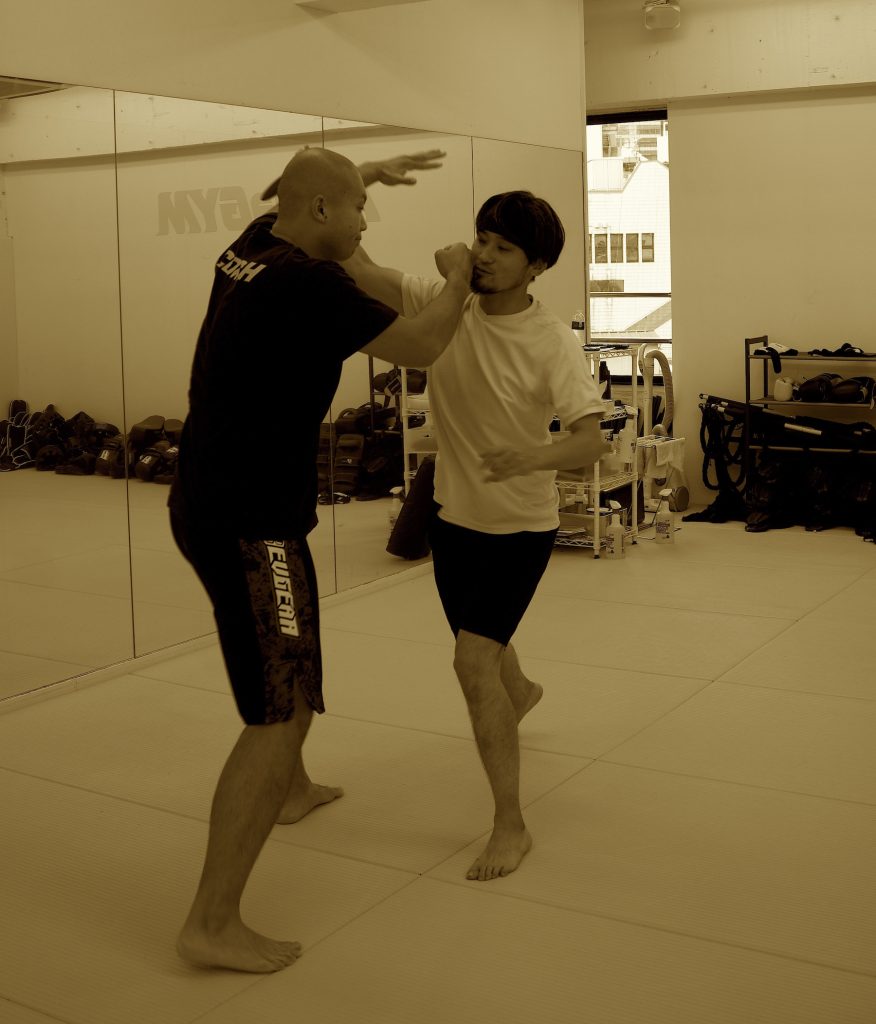
I was in a beginner class, which normally does not involve much self-defense and focuses more on striking techniques. But today Kuma thought it would be a good idea for the instructor to incorporate some self-defense. And so began the knife attacks.
If you have a suitable partner, you can just let out a good giggle if you accidentally stab each other, hard, with the plastic knife. This happened between my partner and myself a few times, and whether this was my natural instinct to behave with aggression or my lack of control with a knife is unknown to me. The animal inside me was unlocked.
We did a series of exercises that involved blocking knife attacks, incorporating correct feet positioning, body stance and arm movements, all in an effort to heighten our coordination skills. After a certain amount of time, the need to dig out reserves of mental strength is essential.
It may hurt, but resilience is key.
With two types of classes — striking and self-defense — and a fitness program, the gym offers a range of ways to begin your Krav Maga journey. You can start with a beginner’s class where you get used to the basic stance and movements or go straight into the KM1 (Krav Maga1) class, which involves more self-defense, but with the same intensity. After 25 or 30 KM1 classes you can move on to KM2 where you’ll learn to defend yourself against weapon attacks. Finally after one or two years you can start KM3, the highest rank, where you will encounter the worst scenarios, such as being faced with multiple attackers.
Many of you may be wondering; why on earth do I need to learn self-defense in Japan of all places? Like Kuma explained to me: “Just think about when you return to your own country, it is a necessary skill to master. Maybe you think you have no way to escape from a bad scenario, but you do have a way.”
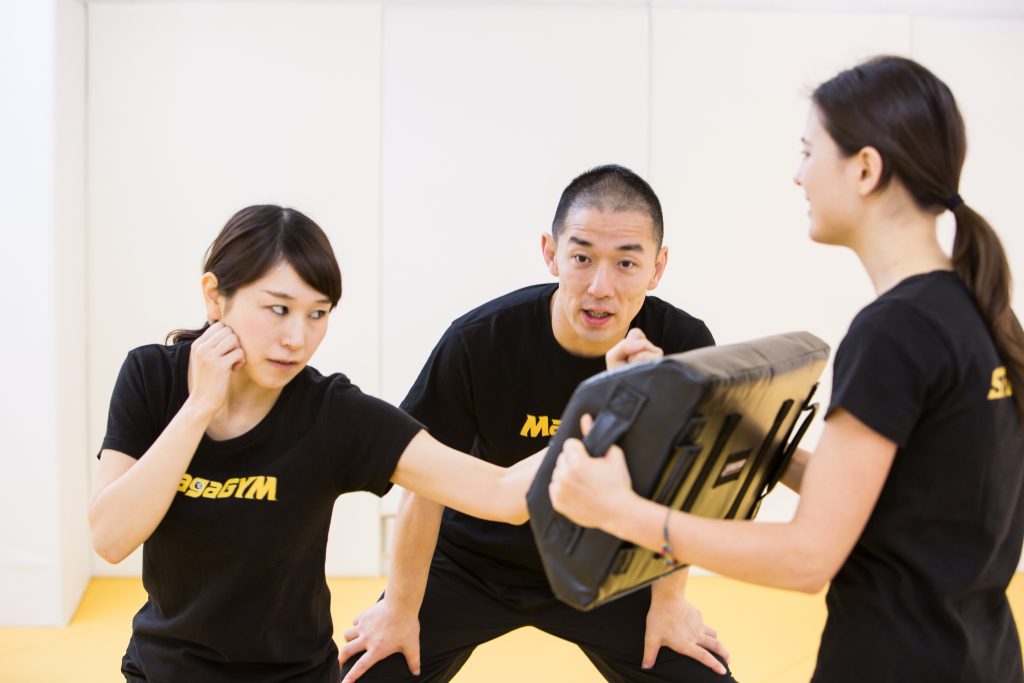
Need to know
The aftershocks?
Yellow and blue hands. That’s the only way to describe what my hands looked like the next day. My shins would have mirrored them had we practiced blocks and kicks. Get the ice ready when you get home.
What should I bring?
Grappling and striking freestyle gloves. If you are someone who bruises easily and perhaps wants to reduce the odds of leaving with throbbing, red hands and wrists, I suggest buying some. These allow freedom of the fingers for gripping a knife or pad in practice, or, perhaps trying to gouge someone’s eyes out. The padding should do a decent job of protecting your wrists and hands from your heavy blows to the pads.
What should I wear?
Go for comfort. In Krav Maga the hard bone in the shin will take the impact, so feel free to wear MMA shorts, but I suggest leggings or tracksuit bottoms. If you want to, training in a long sleeved top is fine, and gives you that extra layer between you and a pad or someone’s arm. Like all martial arts, it’s best to train barefoot.
The Deets
Address: Arrow Bldg. 4F, 3-14-7 Roppongi, Minato-ku, Tokyo
Tel: 03-6432-9794
Access: Roppongi station, Exit 3
Address: Akasaka HM Bldg. B1F, 3-7-13, Akasaka, Minato-ku, Tokyo
Tel: 03-6432-9794
Access: Akasaka-Mitsuke and Akasaka stations
In the Savvy “Tokyo Fight Club” series, Maxine Cheney heads to some local martial arts gyms to get fighting fit, release some stress and work on her straight kick. If you’ve wanted to up your fitness and self-confidence as well as learn how to throw (or block) a punch, Maxine will let you know what to expect in each discipline. In Part I, she looked at kickboxing and in the next chapter, she gets into the ring and finds out all you need to know about MMA training in the city.













